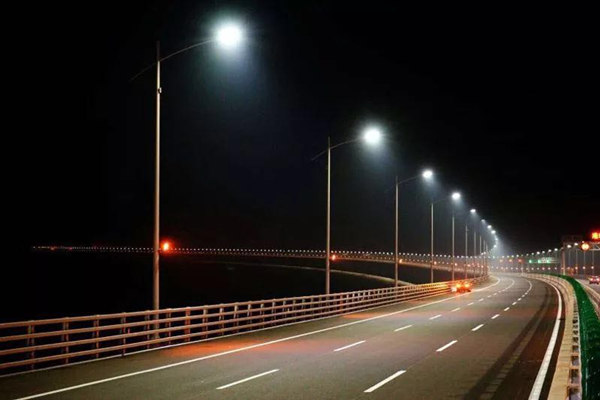Three checkpoints of the Hong Kong-Zhuhai-Macao Bridge will distinguish between what vehicles may pass 24-hour customs clearance when responsibilities are handed over to local Zhuhai, Hong Kong, and Macao governments.
Only vehicles with Guangdong-Hong Kong, Hong Kong-Macao, or Hong Kong license plates (with Macao quota) as well as those with one-off quotas or approved by each of the three governments will be permitted to cross.
An artery toll station at the main section has 20 toll booths, incorporated with Electronic Toll Collection (ETC) and Manual Toll Collection (MTC) systems, to efficiently process vehicles heading for either Macao or Hong Kong.

License needed to cross bridge [Photo by Li Jianshu / Zhuhai Daily]
Ample parking zones are also available for the convenience of drivers. The east parking lot of the Macao checkpoint has 3,759 parking spaces, 40 of which are barrier-free and nine accessible with charging poles -- all for entering motorists. On the other hand, the west parking lot will serve exiting vehicles, providing 3,105 car, 2,054 electric motorcycle, 36 barrier-free, and five EV-only parking spaces.
The first floor underground of the Zhuhai Border Checkpoint is reserved for rail transportation and parking of 1,361 public vehicles, including 32 stalls for physically challenged drivers. Meanwhile, the Hong Kong Boundary Crossing Facilities will have 650 private car parking spaces. The two engineered islands are dedicated for buses, coaches, tourist buses, and taxis on the ground floor.
A total of 140 shuttle buses commuting between the Hong Kong-Macao and Zhuhai- Hong Kong routes will initially arrive at intervals of 10 minutes, and be increased to every three to five minutes.
The bridge main section is designed to handle a speed limit of 100 km (62 miles) per hour. Vehicles should drive on the right in the mainland and switch to the left when they arrive in Hong Kong or Macao due to different traffic laws.

















